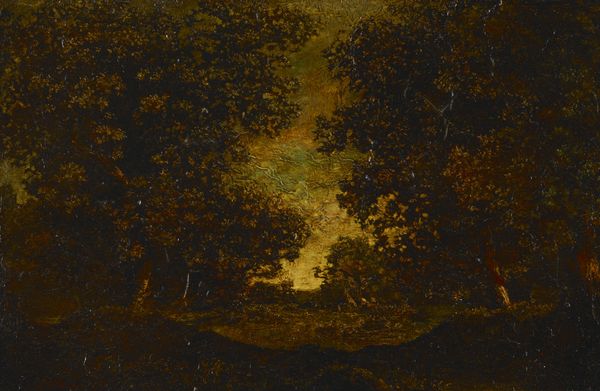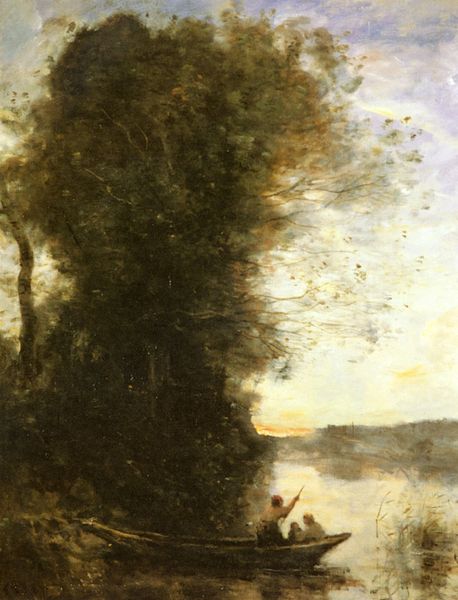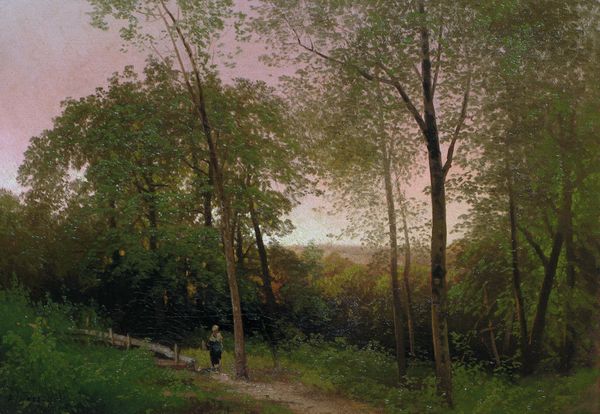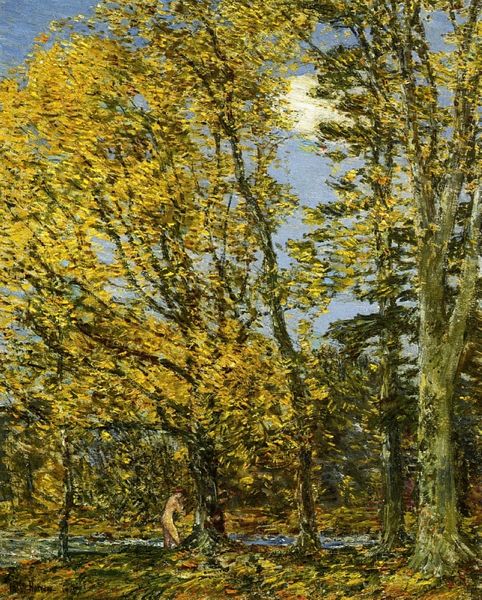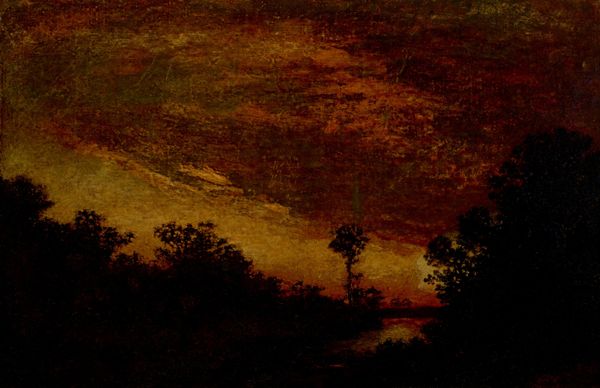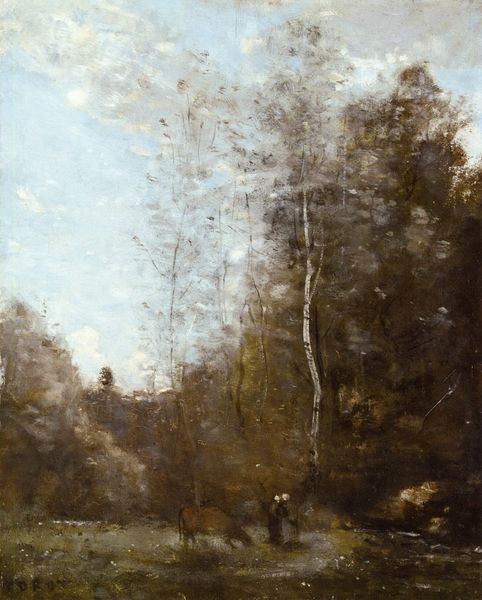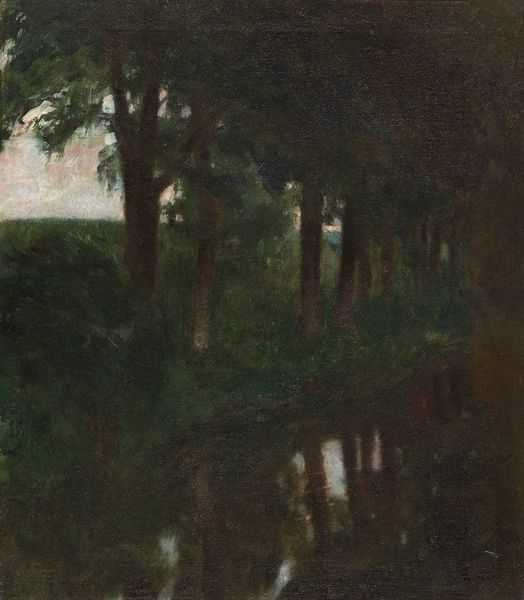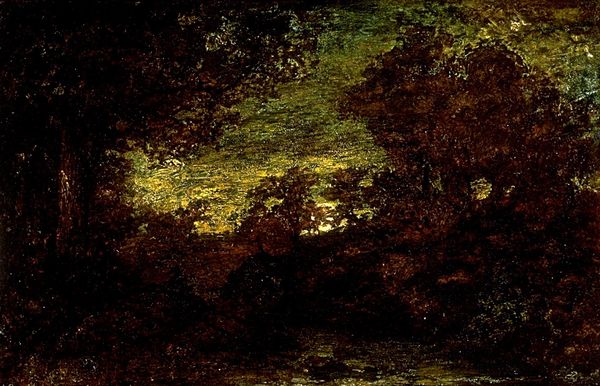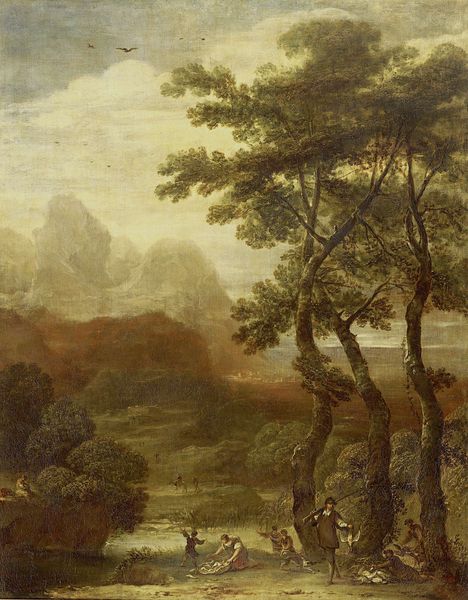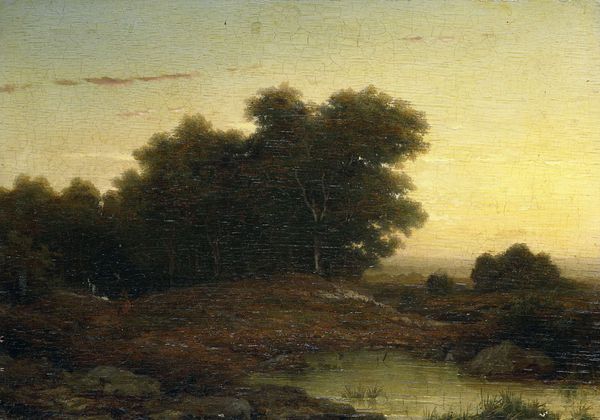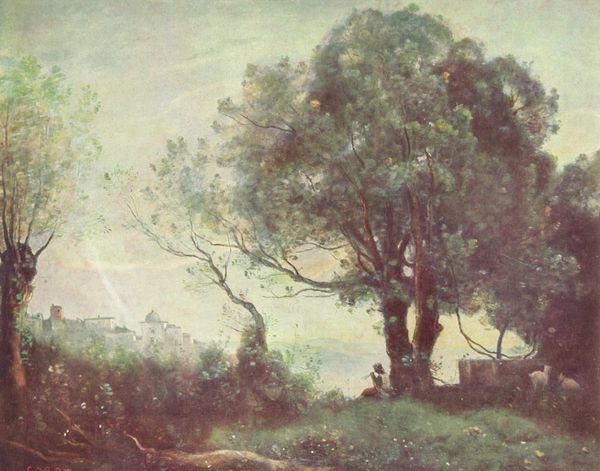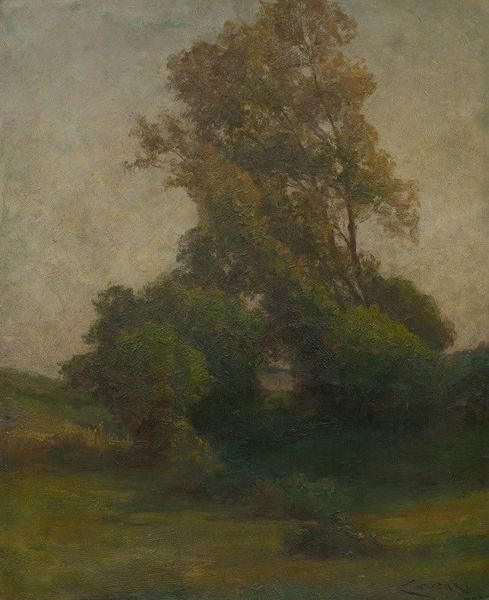
painting, oil-paint
#
painting
#
oil-paint
#
landscape
#
oil painting
#
romanticism
#
watercolour illustration
#
realism
Dimensions: 17.5 cm (height) x 18 cm (width) (Netto)
Curator: At first glance, I find this work incredibly calming. The sky, rendered in such gentle tones, almost melts into the dense greenery. There's something profoundly peaceful about it. Editor: Here we have "Study of Undergrowth and Tall Trees, Funen" created around 1846 by Dankvart Dreyer. The canvas, rendered in oil, speaks volumes about the period's understanding of nature and rural landscapes. But its creation also exists within a very specific, male-dominated understanding of what landscape means. What do you make of that peace when considering it in this context? Curator: It's interesting you bring that up. Because beyond its immediate serenity, I can see the composition potentially acting as a symbol. Think of the forest as a historical motif: it's untamed, perhaps even resistant to certain structures of power. Dreyer, consciously or not, captures the potential resistance in allowing nature to present itself freely. Editor: Indeed. Dreyer presents these tall trees as sentinels. We understand the individual tree motif— the tree of life, family trees— but what about these specific pines? They’re not native to Funen and their symbolism in art has long implied endurance, truth and immortality. By prominently positioning them in his painting, Dreyer taps into these archetypes. Curator: I’m also drawn to the fact that it's titled "Study" --it feels intentional. Are we meant to believe this isn’t a “finished” piece of art, that it’s a fleeting moment in time or simply a preparatory step? Perhaps this gives the artist license to engage in quiet observations of landscape outside of genre, outside of societal norms. Editor: Precisely. That sense of ‘unfinishedness’ removes certain representational expectations tied to landscape, doesn’t it? The interplay between what's revealed versus concealed within the thicket and shadows. Are there symbols and cultural associations Dreyer might be intentionally hiding, playing with the subconscious of his viewer? Curator: It's an interesting idea. By letting parts of nature remain in shadow or ‘unfinished’, Dreyer avoids making a statement or taking sides; the undergrowth remains free from external or overarching judgment. Editor: Thinking of "Study of Undergrowth and Tall Trees" through a symbolic lens allows for this complexity. It is a space full of layers; some immediately visible, while others require slow, attentive exploration. Curator: It certainly provides us with much to consider about the artist’s intentions. The history of oppression, but also the possibilities within raw, authentic natural experience.
Comments
No comments
Be the first to comment and join the conversation on the ultimate creative platform.
